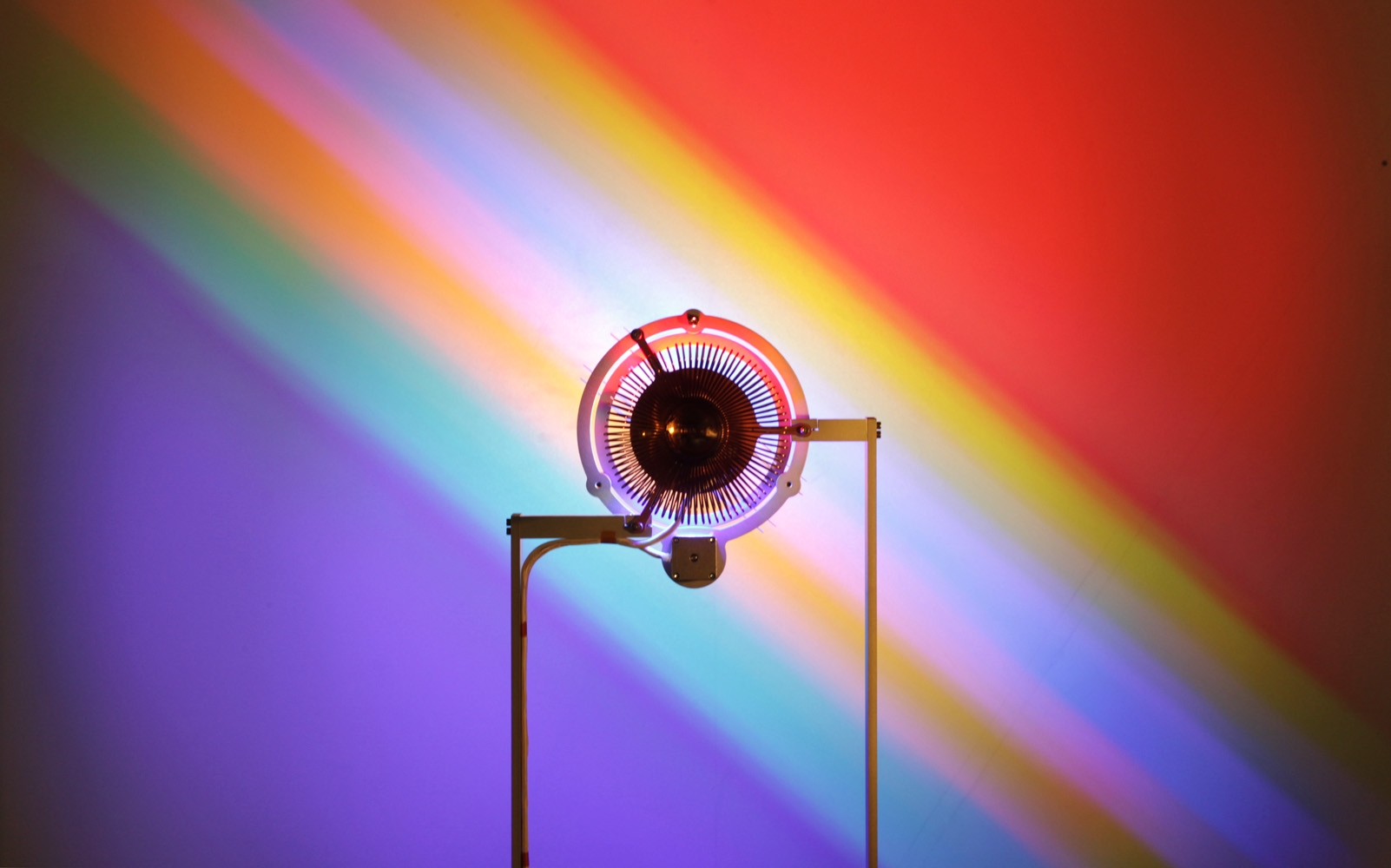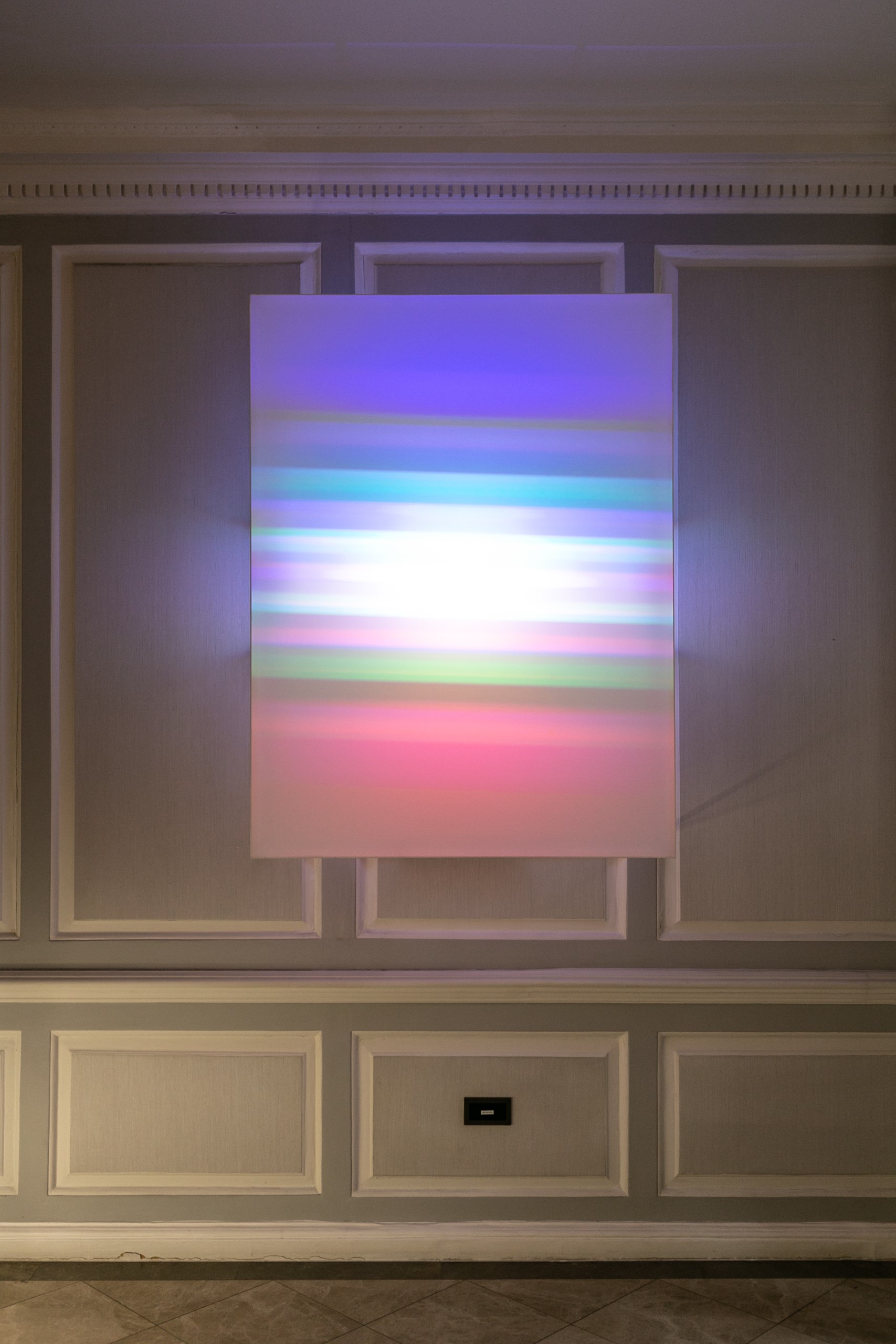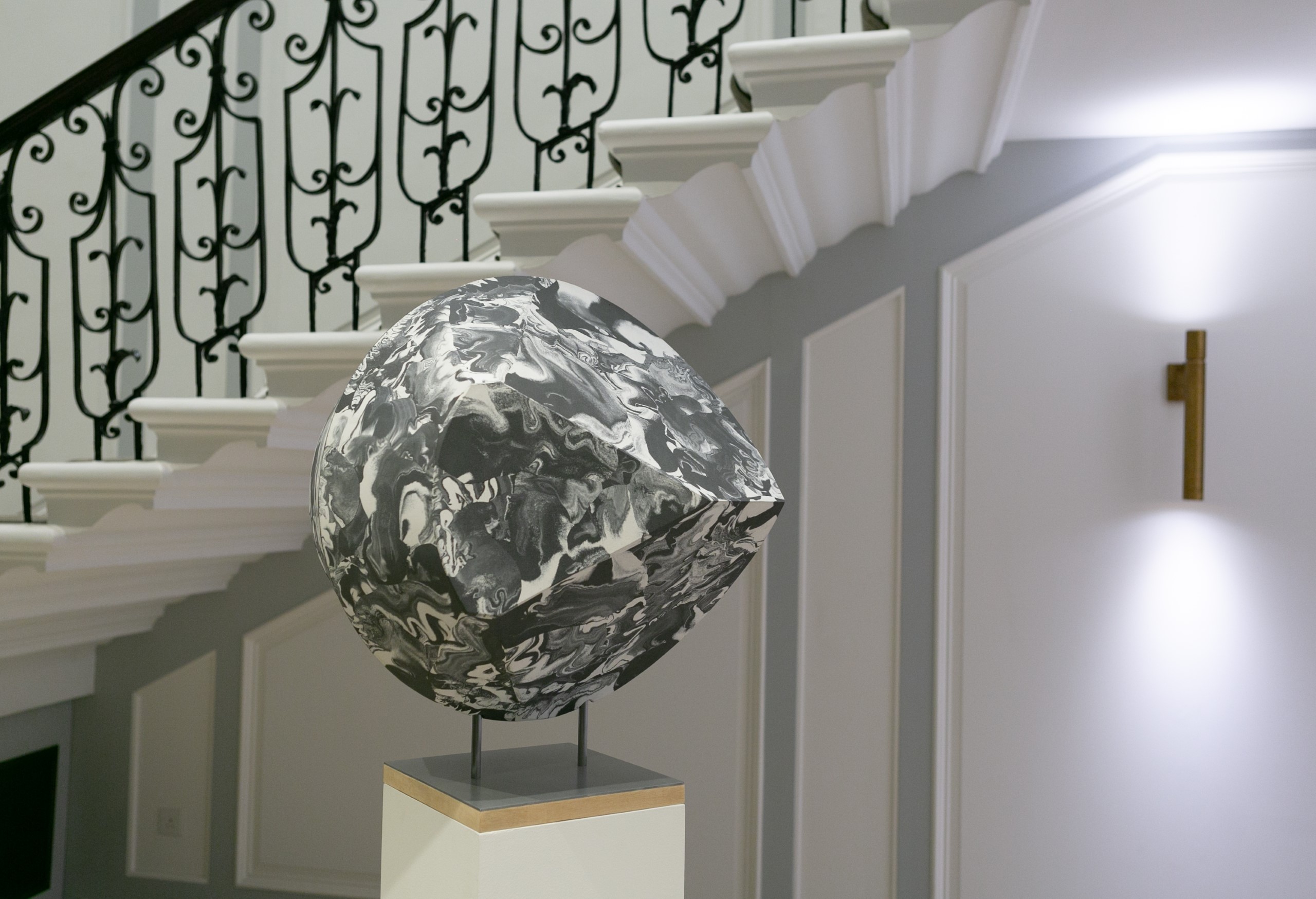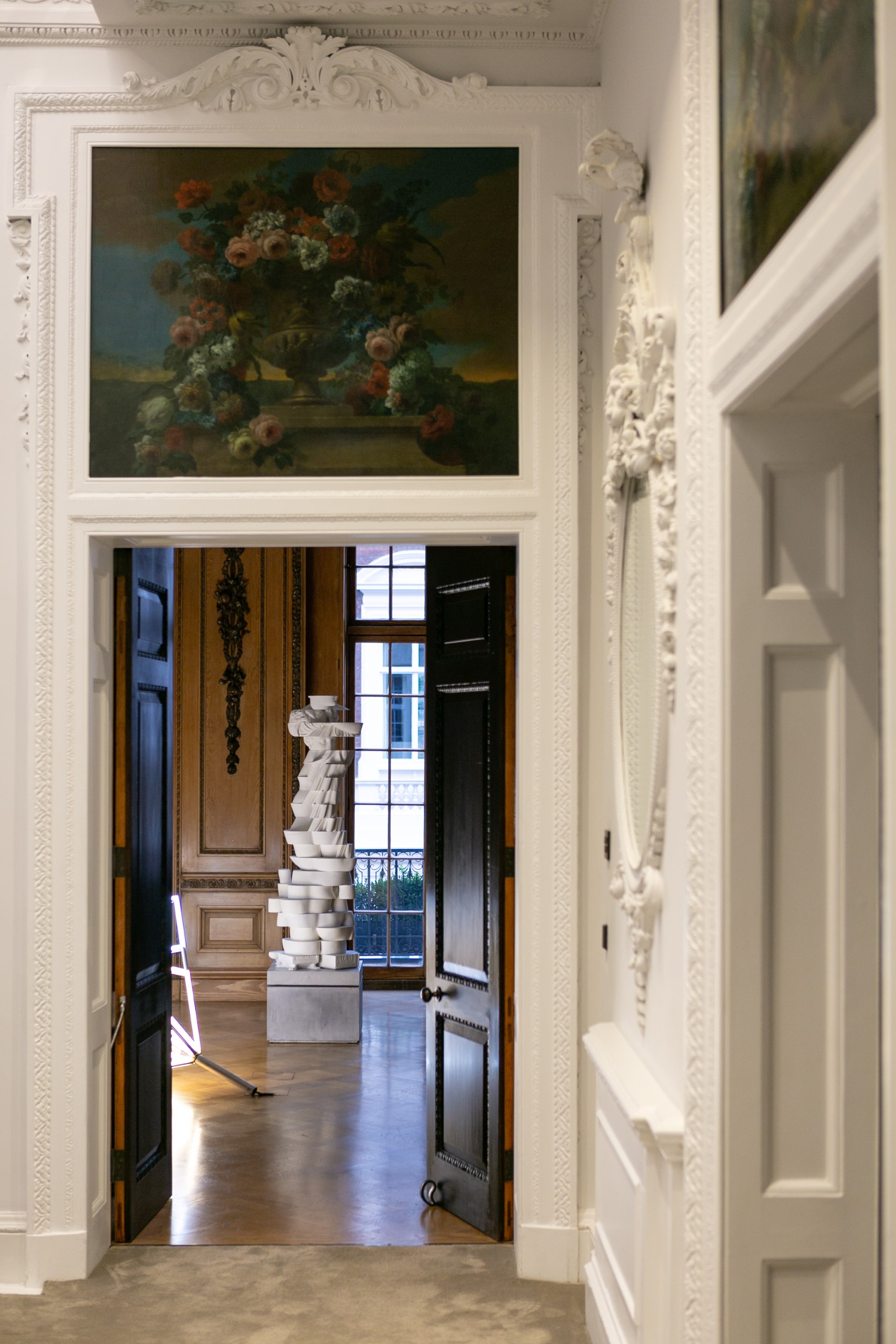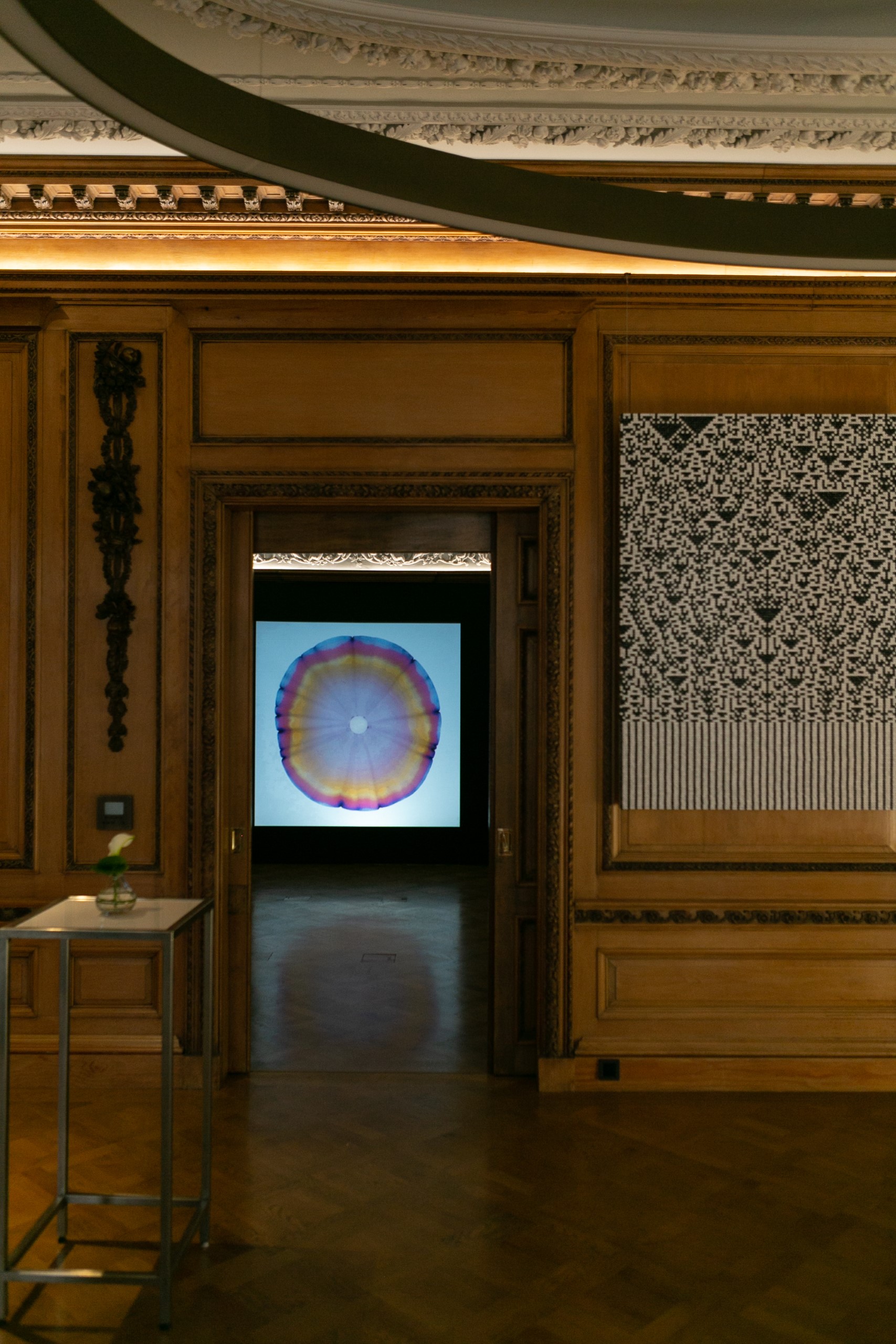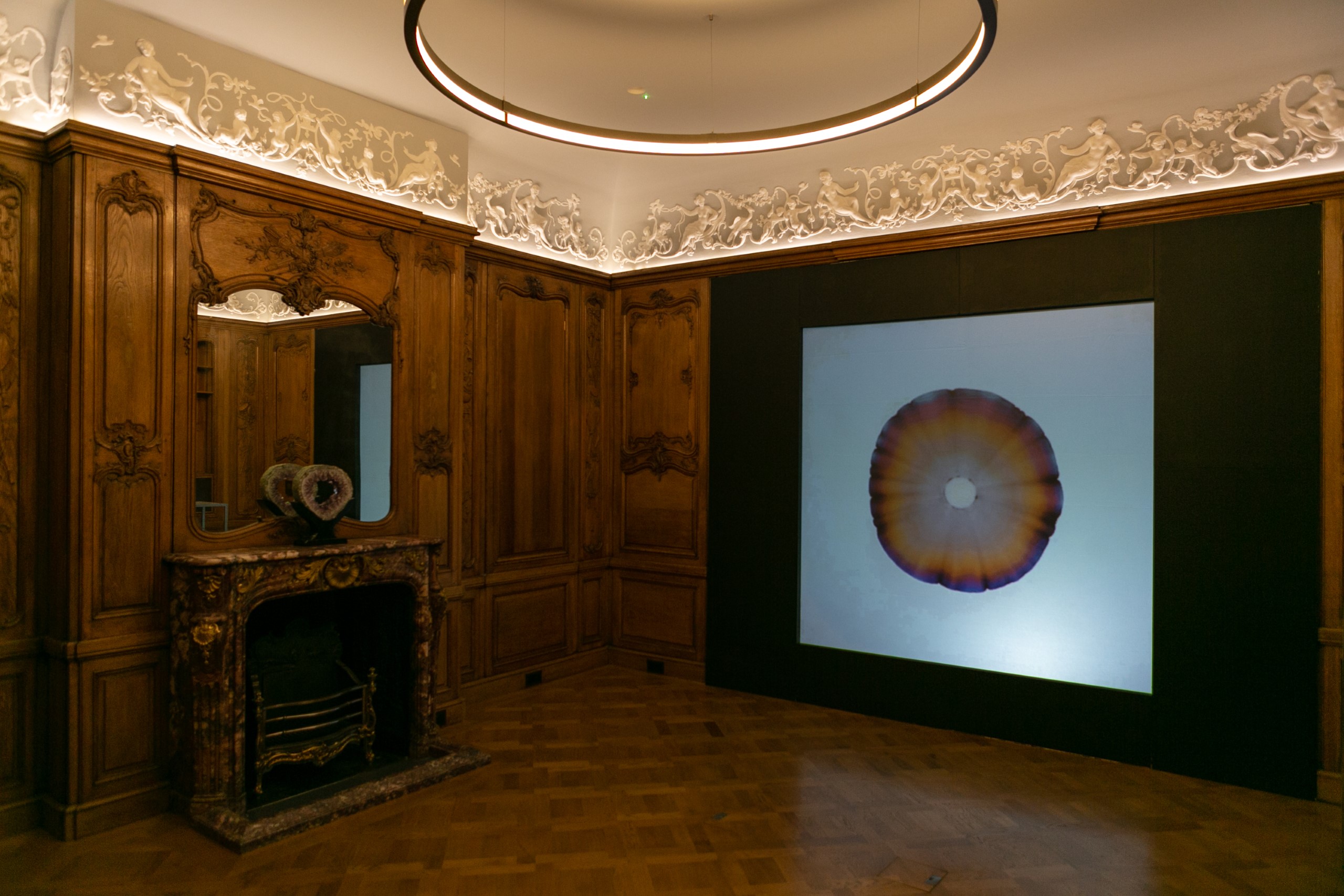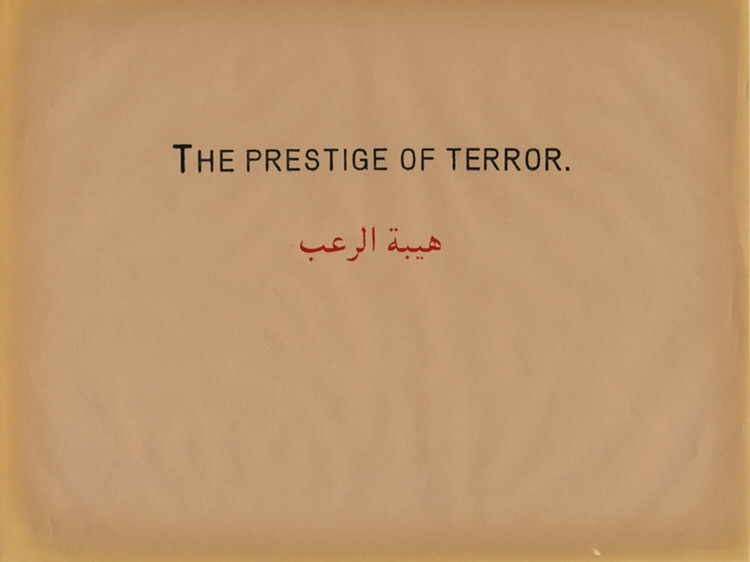To celebrate Frieze Week 2018, Modern Forms curated a special display at Floreat House, HQ of Floreat Group, where highlights of Modern Forms’ collection are exhibited.
The display comprised a curated selection of works from art collective Troika and a new hang of works from the collection.
About Troika
Troika is a collaborative contemporary art group formed by Eva Rucki (b.1976, Germany), Conny Freyer (b.1976, Germany) and Sebastien Noel (b.1977, France) in 2003.
Troika works in the display
All Colours White explores the relationship between what is natural and artificial and the plurality of seemingly indivisible entities and experiences. It consists of a mechanism which projects red, blue and green light onto a canvas structure. The projection is a constant loop of 12 minutes. Initially distinct, the colours gradually bleed into each other, creating an intricate spectrum until their collective amalgamation results in pure, white light. In the installation the natural and the digital collide. The specific combination of red, blue and green references the RGB colour model that mediates our digital experience, while the composite colour spectrum inherent in white light is intrinsically natural. Obliquely interrogating the frameworks through which we perceive the world, All Colours White manifests that which coexists but cannot be experienced simultaneously.
Everything is and isn’t at the same time is an extension of Troika’s series of perspective sculptures. Inspired by Edwin Abbott’s satirical novel Flatland, where the inhabitants of a two-dimensional world cannot recognise a three-dimensional object, Troika’s perspective sculptures mutate into different forms depending on the perspective of the observer. The title Everything is and isn’t at the same time is a direct reference to the Principle of Polarity, proposed in the anonymous, philosophical text The Kybalion: Hermetic Philosophy first published in 1908), which embodies the idea that everything is dual, everything has two poles and everything is opposite. The work unifies structural opposites, consolidating a perfect circle, a hexagon and a square into one sculptural form.
Compression Loss (Venus) is from a series of sculptures in which Troika take mythological figures and deconstruct them into separate ‘slices’. The title references the reductionist strand of Western rationalism, which attempts to understand complex phenomena by deconstructing them into simpler, constituent elements – a world view that fails to account for the particular qualities of the holistic. Each work in the series then has an identity separate from its original and yet still inextricably linked to it – a coalescence of irreconcilable opposites: authenticity and artifice and the virtual and the real. Compression Loss (Venus) is a deconstruction of Venus Italica by sculptor Antonio Canova (1757 – 1822). Along with Jacques Louis David, Canova was instrumental in ushering the age of Neoclassicism with its aesthetic of clear, regular form and calm repose inspired by classical antiquities.
Life and Death of an Algorithm is a work constructed from 21,542 black and white dice, following a pattern generated, line by line, by a simple computer binary programme. Governed by its own laws, the algorithm follows a quasi-animistic trajectory that emulates the evolution of life: coming into existence, evolving and culminating in death as the pattern exhausts all potential paths. The work stems from Troika’s interest in the autonomy of algorithms, technological acceleration and emergence. Historically dice have been a symbol of fate, chance and luck whilst one of the novel conditions of modernity is the extent to which our lives are increasingly determined by technological systems that use data?as a raw material.
Time only exists so not everything happens at once documents the effect of a simple process of applying water to black ink until the black disappears and is replaced by the individual colours of its intrinsic makeup.
Links:
https://www.instagram.com/troika_london/
https://www.digitalartarchive.at/database/artists/general/artist/troika.html
